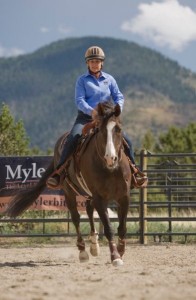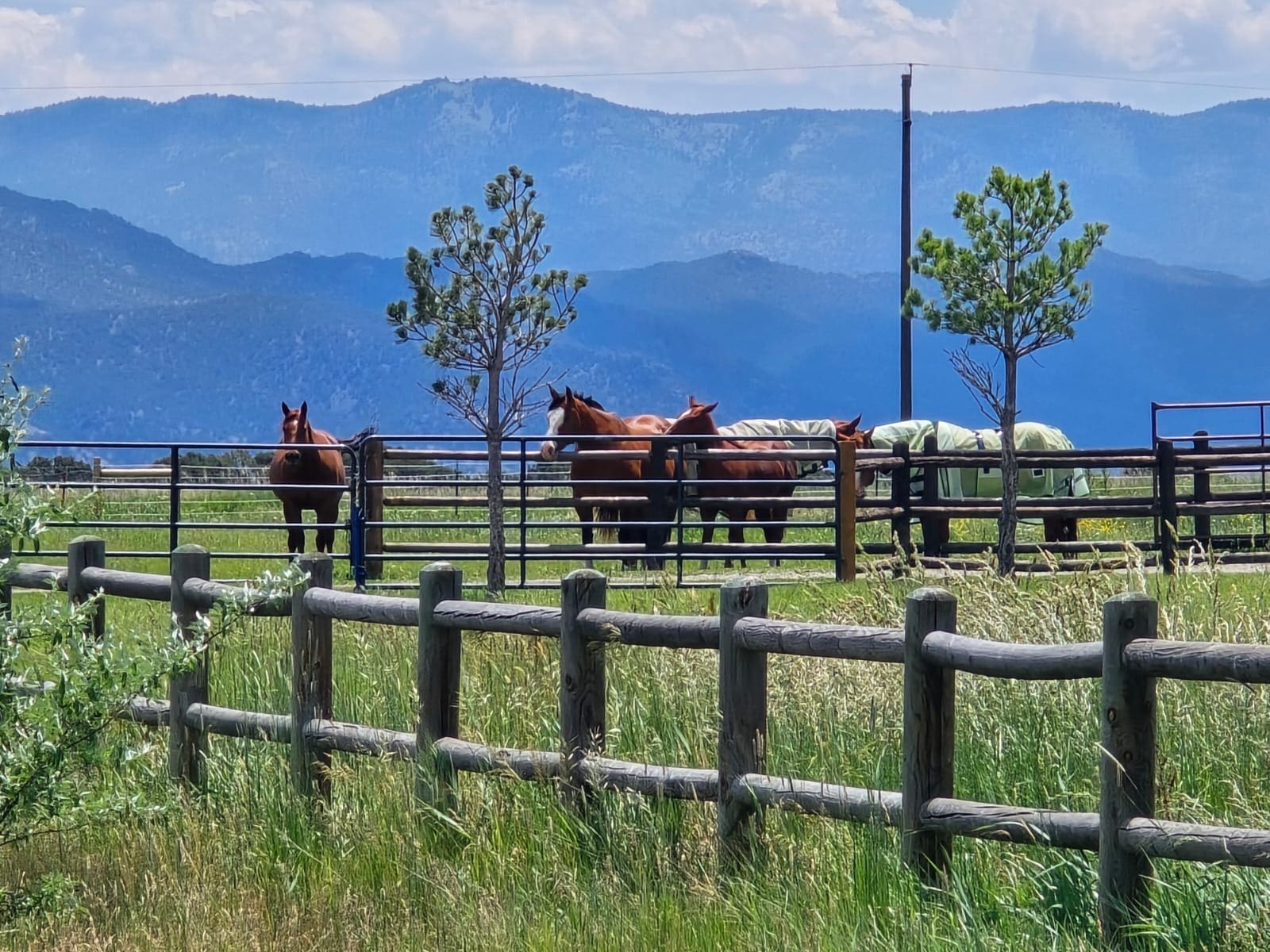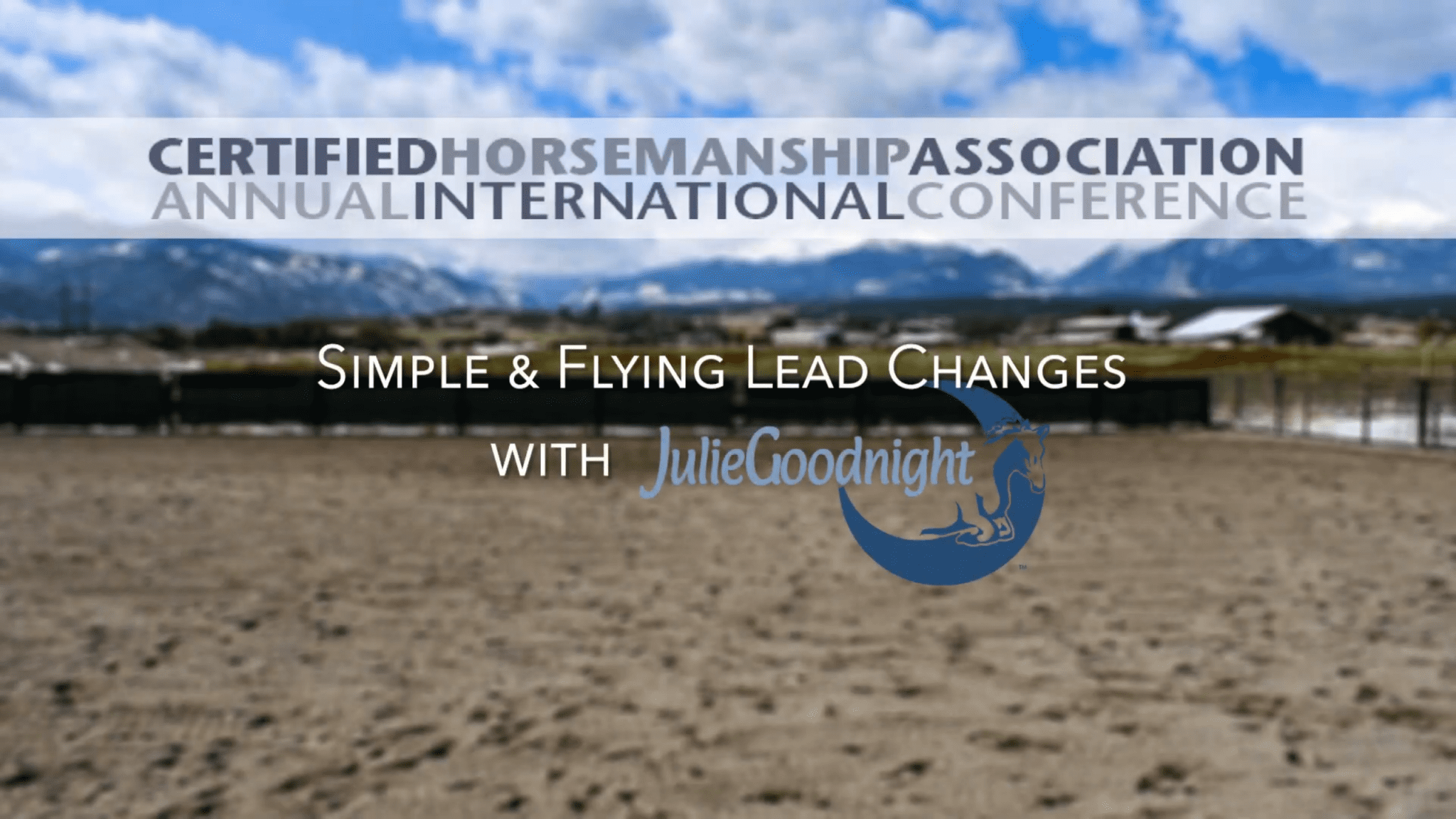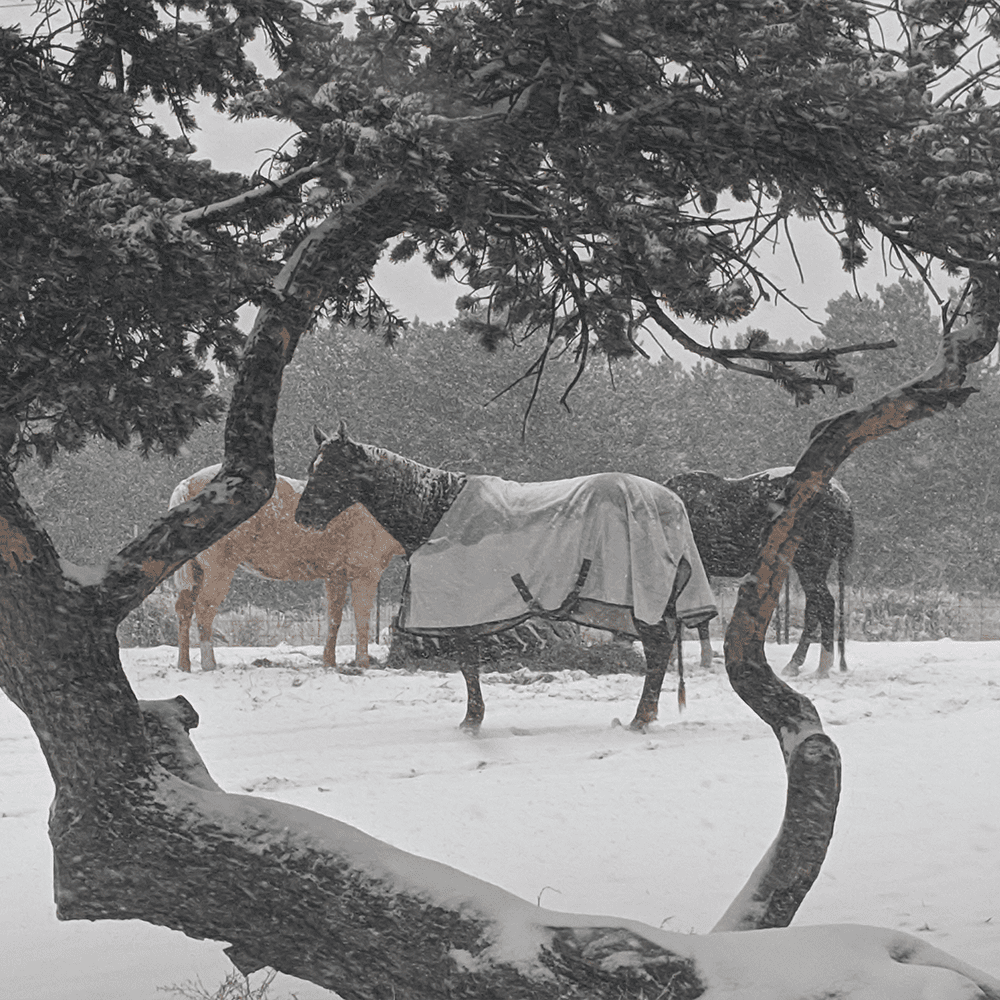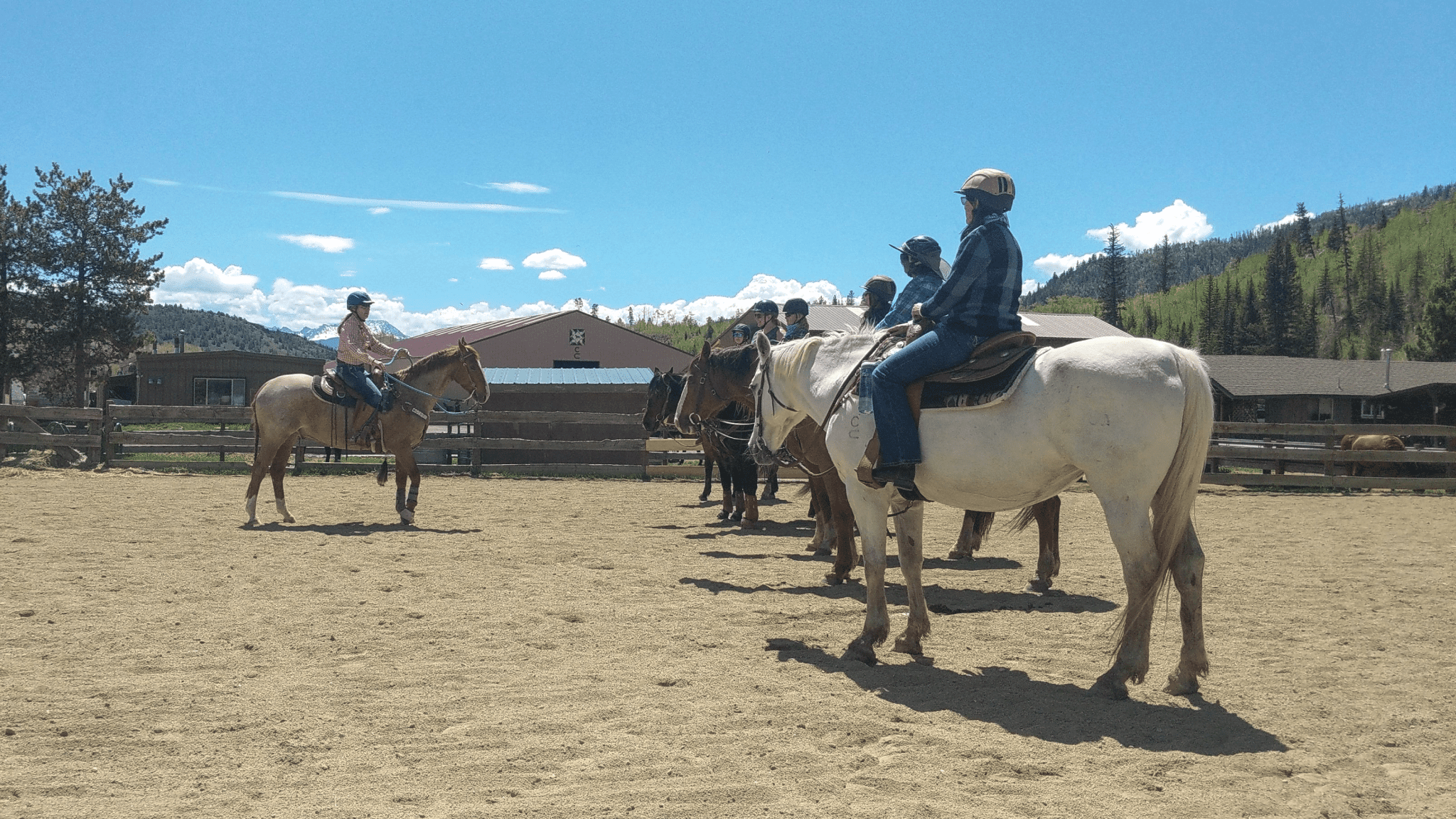Note: In this three-part series, nationally respected horse trainer/clinician Julie Goodnight talks about the three “wings” in her barn (the elementary, middle and high school wings) and discusses what’s important to the age groups and how to keep the horses there in top shape with age-appropriate training and nutrition. If you missed part one, catch up online at http://juliegoodnight.com/blog.
I keep thinking about the three schools in the small town where I live and how those schools—elementary, middle school and high school– translate to the wings of my barn and the young and older horses there.
In the last installment of this series, we talked about the elementary school and how what’s learned there equates to what the youngsters at my barn are learning. Now, I’m thinking more about the students who are outgrowing the strict confines of elementary school and are seeking independence. They are coming into their own and ready to take on the world. The dedicated students in this “wing” of the school know their strengths and are eager to hone their skills. They are seasoned, active and ready to take on the world.
The horses in the “prime-time” section of my barn are mature, fully trained working horses. They get the highest level of care and the most luxurious accommodations because they work for a living. These are my working horses—partners in my business— and they get the very best we have to offer.
In this three-part series, I’ll continue to share stories of the horses that occupy each section of my barn. You’ll learn what behaviors we expect from each age group, how we focus our training, how we keep them fit and the specific health and nutritional needs of each age group. Last month I talked about the youngsters; this month, it’s about our prime-time horses. Next month I’ll talk about the seniors.
Prime Time
From 8 to 15 years old, these horses are in the prime time of their lives. In my barn, they are
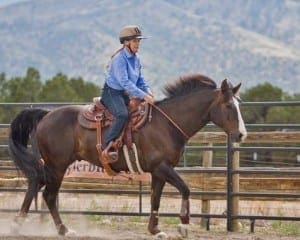
almost all geldings. We have a lot of time and money invested in their training, seasoning and care. I consider these horses to be partners and assets in my business and they are total pros at what they do. Dually, the horse I call my “number one” horse is in this section of the barn. He leads up a team including my new-to-me mare, Annie and my husband’s horse, Magic.
The prime-time horses have pushed hard their entire lives to get to the level they are now. They work hard when required and they are very good at their jobs. These horses have to be ready with a moment’s notice to pose for a photo shoot for a magazine article, to model for a catalog or to make a training video or tape the TV show. I also use them occasionally for live performances at clinics or expos.
They are athletes who are well into their prime and they have used their bodies hard since they were very young. They need a lot of physical care to keep fit and pain-free and stretch out their careers as far as possible.
Behave Your Age
Middle-aged, with successful careers, my prime time horses have come to value the sweeter things in life. They like their comfortably bedded stalls but also want to meander out in the fields, hang out in the shade munching hay and socialize with their peers.
At times, they enjoy running rampantly and true to their heritage, our cow-bred horses like to take turns herding and turning back another horse for fun. Although they enjoy the comfort of their stall when it is dark, cold or windy, they prefer to be outside when it is light and tolerable weather. True to the nature of the horse, they want to be safe and comfortable.
Having worked hard physically for nearly a decade, maybe more, they are ready to kick back a little and not work so hard– a desk job is sounding better and better all the time. However, they do enjoy and seek out the accouterments that come with their jobs– the grooming and spa-like attention have become addictive and if left ignored for very long, these horses will become depressed and sullen.
Training Focus
Our prime-time horses are really fully trained– they know their jobs and do them well.
Although they are occasionally required to learn new routines, mostly the training focus is about maintenance — keeping their bodies fit and their minds and skills sharp.
Scientifically, there are four stages of learning for animals and humans– acquisition, fluency, generalization and maintenance. First the animal must be taught a new skill (acquisition), then practice the skill repeatedly until it is easy (fluency), then practice the skill in new and different contexts (generalization). The final stage of learning is called maintenance, when no further learning/training is needed but skills must remain fresh. This is where our prime time horses are in their training.
For Dually, my emphasis is on keeping him sharp in his reining maneuvers while maintaining the level obedience required for performing bridle-less. We also have to focus on working cows correctly and I have to keep him tuned on the flag. I don’t work on every maneuver every time I ride but instead focus on performing one or two maneuvers really well. Next time I’ll work on something different.
Most of our training focus on our prime horses is in keeping them fit and legged-up, keeping them groomed and glossy. I may only ride my number one horse, Dually one day a week– which is plenty of time to maintain his training; I ride more when I want to work on something new or to prepare for a performance. On days I am not riding, the horses still have a great exercise program.
Fitness
Because our horses get the same level of attention year-round and have never been grossly out of shape, they can stay pretty fit by being worked three to four days a week. They don’t need much practice at what they do, just a good fitness routine to maintain their svelte figures, in an effort to stay young forever. A horse that was totally fat and out of shape would require hard work for 6 days a week for at least 90 days to get in working shape.
Since exercising is the major point in their works-outs and since we don’t want them to get bored with monotonous routines, we try to mix it up a little. I try to avoid the longe line altogether, which is not only boring but hard on the joints too. Instead, we’ll put two or three horses in the indoor arena and free-longe them as a group, the way horses like to run. As they exercise, they have fun with and remain competitive with each other, showing off their mojo while I maintain the upper hand, driving and herding them around the pen.
Other days, the horses will go out long-trotting on the dirt roads and trails for 20-30 minutes. Or they may be ridden through the obstacle course and hand galloped out in the grassy fields.
Health and Nutrition
Some years, our horses eat hay 365 days. Depending on our snowpack from the winter, some years our horses may have a few weeks or more of a grazing diet in the summer. Once the irrigation ditches stop flowing, it is only a matter of time before we have to restrict the horses from the fields.
All our prime time horses are fed whole oats with vitamins each day– some only a pittance of oats, just enough to carry their supplements. Dually is not an easy keeper, so he gets a greater ration of oats plus several supplements and certain medicines to keep him healthy. He has always enjoyed the luxury of being able to eat as much as he wants without getting fat but his sensitive digestive system prevents him from having a vigorous appetite.
For supplements, maintaining joint health is our greatest concern and all of our performance horses are on Cosequin® ASU Plus, the most advanced formula for maximum support. Cosequin ASU Plus contains the combination of glucosamine/chondroitin sulfate plus ASU which has been show to work better than glucosamine/chondroitin sulfate alone in cartilage cell studies. It’s hard to say, but it’s great to feed–Avocado/soybean unsaponifiables (ASU)–is a potent ingredient that protects cartilage. The prime time horses also get Welactin® Equine, an omega-3 fatty acid fish oil supplement which supports cardio-vascular health and supports skin and coat health.
Dually and some of our other horses seem to benefit from a probiotic to aid in digestion. We use Proviable® EQ Powder, adigestive aid containing Saccharomyces yeast species plus prebiotics to encourage normal gastrointestinal function and health. All the prime time horses receive Proviable-EQ in the paste form whenwe are traveling. (Click for more info about these supplements).
Health maintenance is constant and expensive on these horses. Again, I can relate, being in the same stage of life myself. They are vaccinated twice a year to protect from the contagions they may encounter while traveling and often they need professional services like chiropractic, acupuncture, dental work. We tend to spend a lot of money to keep them in great shape and pain-free. Like most horse trainers, I spend more on my horses than I do on myself and they see the vet a lot more often than I go to the doctor.Our prime-time horses are so important to us that we are happy to spend our time and resources on them. We don’t mind going out in the barn late at night to switch blankets to make sure they are comfortable in the changing temperatures or to do one last check before lights out. I rely on them heavily for my business and am happy to invest in their well-being and fund their retirements. Now if only someone would do that for me!
Next month, I’ll introduce you to the senior section of my barn and my two old mares “who ain’t what they used to be.” I’ve owned them for more than 20 years and they have graduated through all the ranks of my barn, ending up in the “senior” nursing home. They’ve been there, done that and are resting on their laurels.
Enjoy the ride,
Julie
Watch Horse Master Online
Julie Goodnight’s top-rated horse training show on RFD-TV is now available online, with valuable training videos available whenever you need them. With well over 100 episodes covering different horse training topics, you’ll find video lessons on almost any topic from halter training a 2-month-old filly to flying lead changes. Twenty-four new episodes are added each year, so you’ll have access to the latest shows, too. You’ll see Julie’s one-on-one help in each show as she helps a different horse and rider achieve horsemanship goals in any discipline. Visit Library Membership for more information.
For more about Julie Goodnight’s training, watch her whole library of training advice and topics with her new online video channel or catch Horse Master broadcast on RFD-TV every Monday at 12:30 and 10:30p EST – Direct TV channel 345, Dish Network channel 231 and on many cable outlets. Visit http://juliegoodnight.com/clinics for the clinic schedule. Sign up for the free monthly newsletter at: Sign Up Here. Goodnight is proud to recommend Myler Bits, Nutramax Laboratories, Circle Y Saddles, Redmond Equine, Bucas Blankets and Troxel. Goodnight is the spokesperson for the Certified Horsemanship Association.

